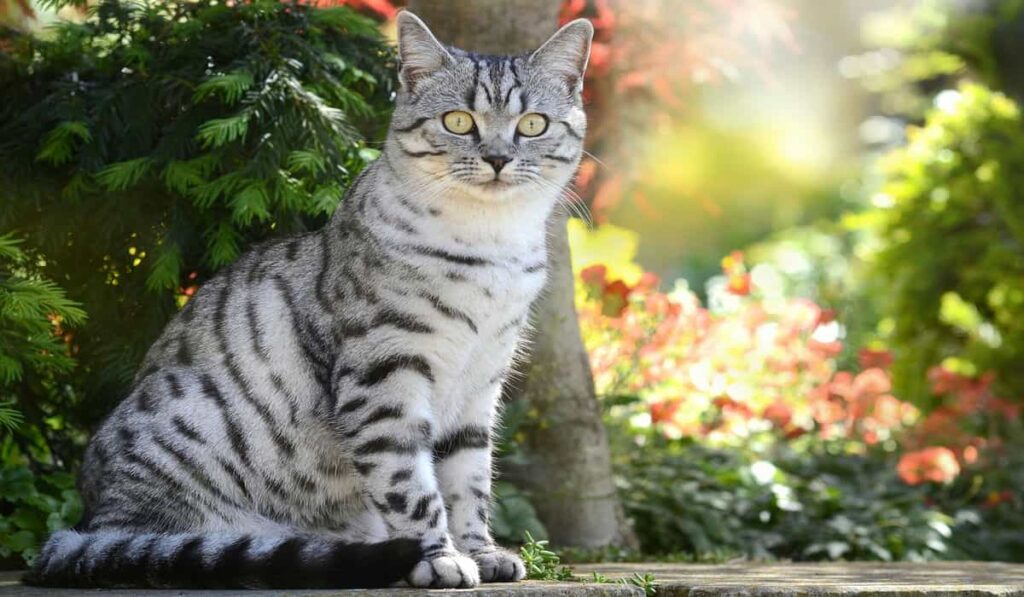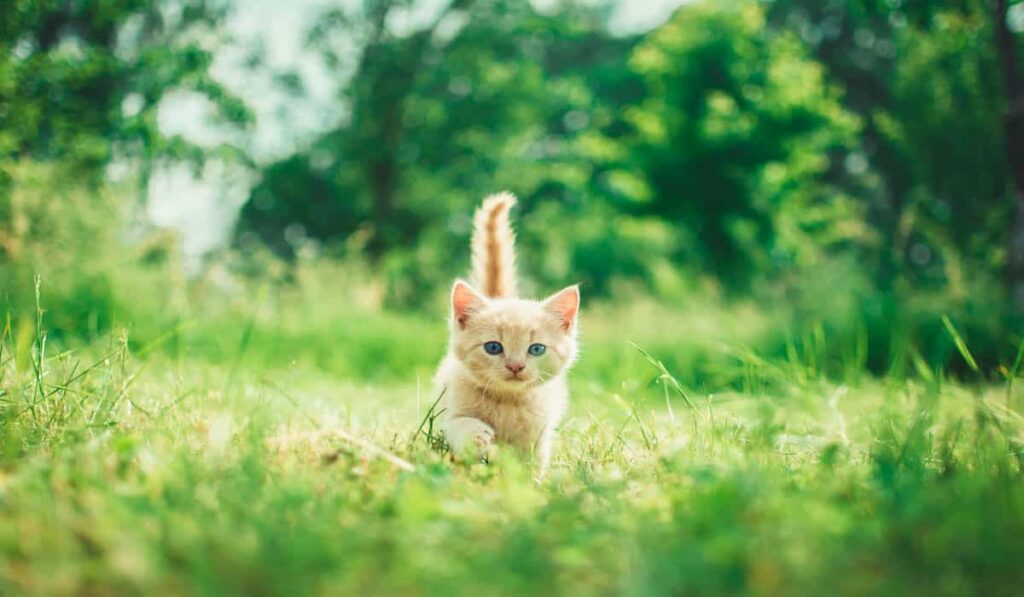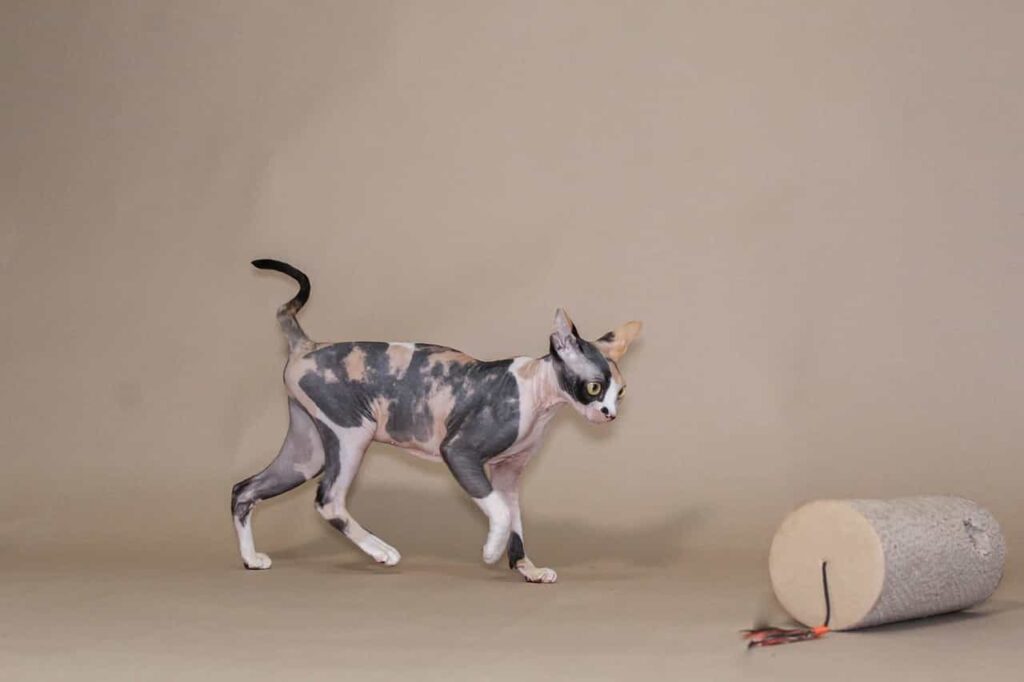Welcome to the enchanting world of Burmese cat, a breed renowned for its remarkable personality traits and captivating lifespan. These glossy-coated companions, including the distinguished Sable Burmese, are not only a joy to behold but also embody a rich tapestry of feline health care and pet nutrition.
As we delve into the nuances of Burmese cat adoption, grooming tips, and feeding guides, prepare to be enthralled by these indoor cats’ playful nature and hypoallergenic qualities. This guide offers an in-depth look at the unique characteristics of Burmese cats, comparing them with other breeds and providing essential tips for caring for these charming felines.
Table of contents
Breed specialty of the Burmese cat
Other names:
Bama Kyaung, Thongdaeng, or Supphalak means Copper color.
Personality and characteristics:
Friendly, playful, active, affectionate, sociable, and chatty.
Body size:
Medium
Body length:
18 inches
Body weight:
Up to 14 pounds
Coat length:
Short
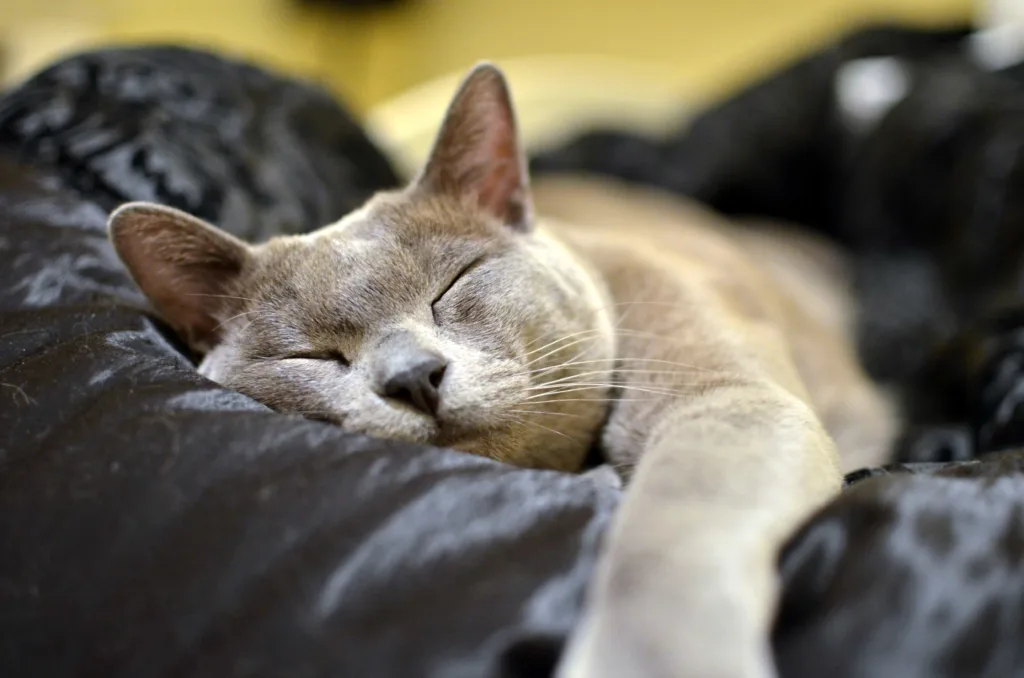

Coat colors:
The original coat color is Sable or Rich and dark Brown or Seal. besides, other colors are also available such as Champagne, Blue, Platinum, Red, Cream, Chocolate, Apricot, Fawn, and Lilac, as variations of each color.
Coat patterns:
Solid and Tortoiseshell
Eye color:
Gold, Amber, and Green.
Friendliness to children and pets:
Very good
Maintenance:
Low
Amount of shedding:
Low
Hypoallergenic:
No
Lifespan:
Normally the lifespan of a Burmese cat is 20 years but a few of them hit their 30s.
Origin:
Burma (Myanmar) and Thailand.
The British European) Type Burmese cat VS the American type Burmese cat
The British and American type Burmese came from the same origin but were genetically distinct. But there are some differences between the 2 types of the Burmese cat. The american or Contemporary type is a noticeably stockier cat, with a much broader head, round eyes, and distinctively short and falt muzzles.
In the American type, Burmese cats come in just one coat color and the color is deep chocolate, Sable, or Seal color. The American Burmese cats have a compact and well-rounded appearance. The British or traditional cats tend toward more slender, long-bodies cats with wedge-shaped heads. The British or European Burmese cats come in various colors and coat patterns such as Champagne, Blue, Platinum, Red, Cream, Chocolate, and Lilac, as variations of each color.
Their coat patterns are Solid and Tortoiseshell. Their bodies are elegant and moderately round. And, their eyes have a topline and are slightly curved and slanty towards the nose.Both types have Golden, Green, or Amber eye colors.
Origin of the breed- Burmese cat
In 1871, a cat show was organized in Crystal Palace, London, UK. Harrison Wire organized and a pair of Siamese cats were shown and the modern American Type Burmese cat and Tonkise cat breed resemble these pair.
A breeding program was conducted to raise the Burmese breed in the UK in the late 19th century but it was not successful. The kittens were named Chocolatepoint Siamese rather than a new breed. Thus the attempt was stopped and any further breeding wasn’t conducted.
Many years later, in 1930, Dr. Joseph Cheeseman Thomson imported a female Siamese cat from Myanmar. Though Wong Mau was a Siamese cat she has the potential to create a separate breed. However, Wong Mau met a Seal Point male Siamese cat, named Tai Mau. After that Wong Mau was crossed with her son and produced Dark Brown kittens and those kittens were the founders of the modern Burmese cat breed.


more about Burmese cat origin
The Cat Fanciers Association (CFA) recognized the Burmese breed in 1936 but withdrew it in 1947 because the breeders were crossing the Burmes with Siamese cats. CFA stated that the Burmese breed had to the standard of 3 generations of pure breeding. The standard was achieved in 1956 and CFA returned the breed standard to the Burmese cat.
Meanwhile, in the United Kingdom, the breeders were very interested to have a British or European version of the Burmese cat breed. So, they imported Burmese cats from the USA and started the breeding program. By 1952, the 3 true generations were produced and The Governing Council of the Cat Fancy (GCCF) which is the parent cat association of the UK, recognized Burmese cats as a breed.
The 2 countries strictly kept the differences between the British type and the American type. CFA declassed the British type in 1982 and GCCF banned the importation of American-type Burmese cats into the UK to preserve the bloodline. However, cat associations all over the world don’t recognize separately the 2 types of Burmese cats. They just consider them two different types of the same breed.
The appearance of the Burmese cat
There are 2 types of Burmese cats- American Burmese and British (European Burmese). The American Burmese has a rounded head and face than the British Burmese.
Body:
The Burmese cats have medium-sized, well-muscled, and stocky bodies. Their chests are also rounded and the backside is straight. The Burmese cats are called ‘the Brick wrapped in silk.’ this name is appropriate for them. Because they are heavier than they look. Their body size is medium, their body length is 18 inches, and their body weight is up to 14 pounds.
Head:
The Britsh-type Burmese cat’s heads are square and the American-types are rounded. Both types of ears are medium and wide apart, set at the corner of the head. Their noses are straight. The jaws are wide and the cheeks are wide. The Amerian Burmese cats have flat and wider muzzles.
The American Burmese have round and larger eyes. The British type also has big eyes. The Amerian Burmese cats have flat and wider muzzles.
Eyes:
Both types have golden, Amber, and Green eyes. However, blue Eyes in Burmese cats are considered a defect.
Coats:
Both American and British Burmese have short, satin-soft, silky, and lying down to the body coats.
Coat colors:
There is a mutation of Tyrosin that Burmese cats carry in their coat colors. The mutation of Tyrosine washed out the colors to the warmer parts of the body. Tyrosine is a necessary enzyme that produces Melanin for the body. The pointed cats have a defective Tyroisine that only works on their face, legs, paws, and eyes.
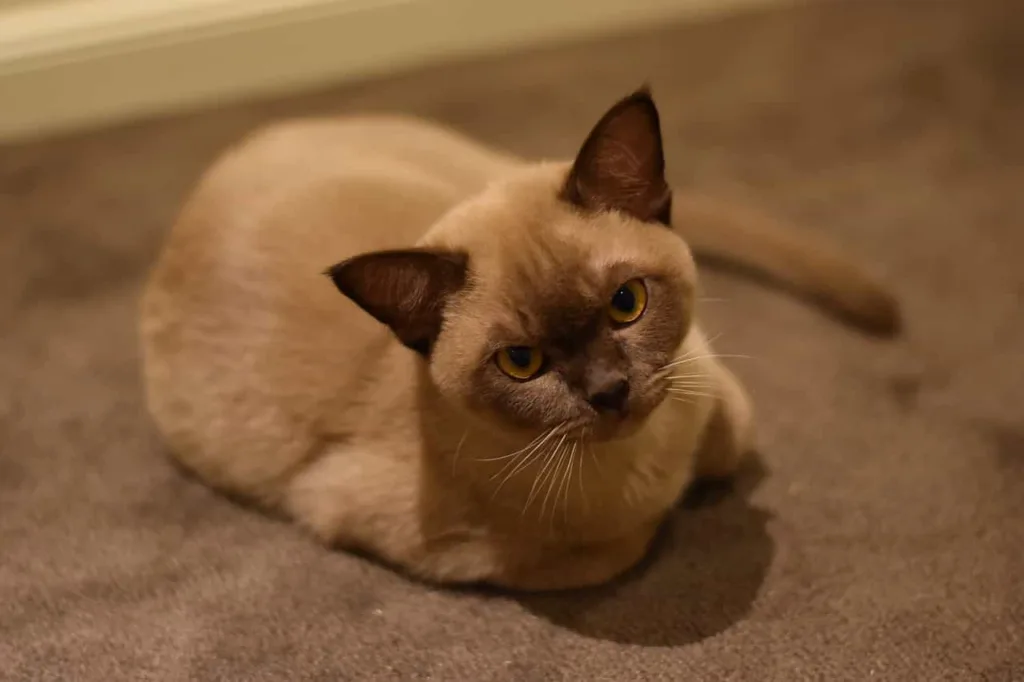

More about Burmese cat appearance
The deep brown/ Sabel/ Seal is the original coat color of the Burmese cats and the American-type Burmese have the same coloration. But in the UK, due to more crossing, the various coat colors are accepted. Such as – Champagne, Blue, Platinum, Red, Cream, Chocolate, Apricot, Fawn, and Lilac, as variations of each color. But not all cat associations accept all colors. Only 4 colors are accepted by all cat associations- Brown, Chocolate, Lilac, and Blue.
The additional colors are-
Brown Tortoiseshell, Blue Tortoiseshell, Chocolate Tortoiseshell, Lilac Tortoiseshell, Lilac Tortoiseshell, and Cream Tortoiseshell. The cinnamon gene is a member of the same Chocolate gene series. The Chocolate gene is recessive to the Black gene and the Cinnamon gene is recessive to both Balck and Chocolate genes.
New colors:
Russet- a relatively new coat color.
Coat patterns:
The American Burmese cats are seen in only Solid patterns and British Burmese are seen in both Solid and Tortoiseshell coat patterns.
The Cat Fancier’s Association (CFA) standard for the Burmese cat breed
The Cat Fancier’s Association (CFA) determines some coat color and pattern standards for all cats. CFA is a parent cat association worldwide. It was established in the USA in 1906.
The unique and Golden-eyed Burmese cats are very easy to recognize for their coats and eyes. Well, the Cat Fancier’s Association (CFA) determines 4 standard coat colors for the Burmese cat breed.
The Burmese cat coat color standards
Though the Burmese breed comes with various and interesting colors, CFA recognized only 4 colors. Those are-
Sable or Deep Brown, or Seal:
It is the original coat color of the Burmese breed. Sable means the various tones of Chocolate color. When they take birth, come with the lighter version of Sable but as they grow up it becomes darker.
Champagne:
Champagne coat color is actually a creamy honey color. The color bleeds into darker Ashy-Brown. The face, paws, ears, and tails have darker shades, and the belly and chest areas have a light color.
Blue:
Well, Blue is the most desirable coat color among all the existing coat colors of the Burmese breed. Blue means actual Blue, it is dusty grey and deep and the color becomes dark at the tail tip. Most blue-coated Burmese cats have Green eyes.
Platinum:
Platinum is the lightest among all Burmese coat colors. The belly area is lighter and unlike the other Burmese cats, the face isn’t darker.
The other Burmese coat colors
Though CFA recognized only 4 coat colors there are other colors that are very popular and the breeders are happy to breed, give ads, and sell those different coat-colored Burmese cats. Those are-
Lilac:
Though Lilac can be considered Blue the Lilac coated Burmese cats have a Purplish hue on the face, tails, and paws. That’s why they are considered Lilac.
Fawn:
Fawn Burmese cats fall into the Champagne range but they have a different look. Most of the Fawn-coated cat’s faces are dark and the face area has a dark or Coffee color and is darker than the rest of the body.
Red:
The beautiful Red-coated Burmese cats are not actually Red but rather Rusty-coated. The belly and chest area have a lighter shed that blends with the copper color on their backside. They have an Orange marking on their face. With growing age, the rustiness becomes dark.
Cream:
Cream color coats can be considered Platinum color. The nose of the cat is Pink.
Chocolate:
Chocolate means Mocha-colored Burmese cats. The gorgeous Chocolate color contrasts with the penetrating eyes. The Chocolate is also called Ash-brown.
Cinnamon:
The Cinammon-coated Burmese cats fall into the Sable category. Their ears and noses are Pinkish and the Cinnamon coat color is also rusty-peppered colored.
The Tortoiseshell is not a coat color, it is a coat pattern. Tortoiseshell is available in many cat breeds. When the coats have dark patches of Red, Black, and other shades of color, it is called Tortoiseshell or Tortie. Most of the Torties are females.
Temperaments and nature of the Burmese cat breed
Burmese cats are extremely trusted by people. They are far too trusting and outgoing. To be allowed outside, they have a tendency to be fearless to their own detriment. They’re vocal cats but not like the Siamese. They’re soft-spoken and have a deep voices. They can even loudly rumble like wild cats when they don’t get enough attention.
Burmese cats are pretty active. They tend to keep their playfulness till their adulthood. They love their families. The Burmese breed is notoriously known as dog-like cats. They are people-oriented, follow their owners, need and demand attention, wait at the door for you to get home, and want you to play with them.
Nature of the Burmese cat
They love to curl up in a warm lap and be petted, and they’ve ever been known for playing fetch. They’re prone to develop separation anxiety because they are so loving. They will really suffer if you leave them alone for long periods of time and can even become destructive.
So, if you’re regularly doing a 9 to 5 job, a Burmese cat is not a good choice for you.The Burmese breed is a very intelligent cat breed in the world. They love to learn and can be taught different tricks and tend to get along with other pets. They tolerate well-behaved dogs and are also good with children if the kids are taught to treat them respectfully.
However, when it comes to other cats, it doesn’t get always along with them. So, if you want to keep 2 cats together, then another Burmese will be the best. This Burmese will accompany you in reading the newspaper and working on the computer, preparing the meals, and in the movie night. They will sleep with you on the bed and when you are sitting they’ll be on your lap or will sit beside you. They will scold you if you ignore them.
The female Burmese are like the queens. They like the attention and charge of the houses. The Burmese cats are the extroverts of the cat world. They’re extremely curious and like to investigate their owner’s activities. They love to be on their owner’s shoulders. If you’re adding a Burmese cat to your family then get ready for a highly energetic, intelligent, and curious cat.
Burmese cat Caring, grooming, exercise, and training tips
Caring:
The Burmese cats are extremely intelligent, curious, active, playful, affectionate, and people-oriented cats. So, you have to provide the opportunity to get a lot of mental stimulation. Provide various interactive toys. Also provide with them tall cat trees, shelves, watching windows so they keep their brains busy.
The Burmese cats are not for those families who are very much busy and the members of the families go outside together leaving the Burmese alone. If you’re a full-time job holder then fix a family schedule to accompany and play with your Burmese. If you can’t do this then keep another feline so that your Burmese can play with it. Burmese cats don’t do well with other cat breeds if they are not grown up together. So, the other cat should be Burmese.
I would recommend you keep your Burmese indoors to save them from viruses, infections, fighting with other cats and dogs, and road accidents. There is a high risk of being stolen as Burmese cats are very beautiful and coveted.
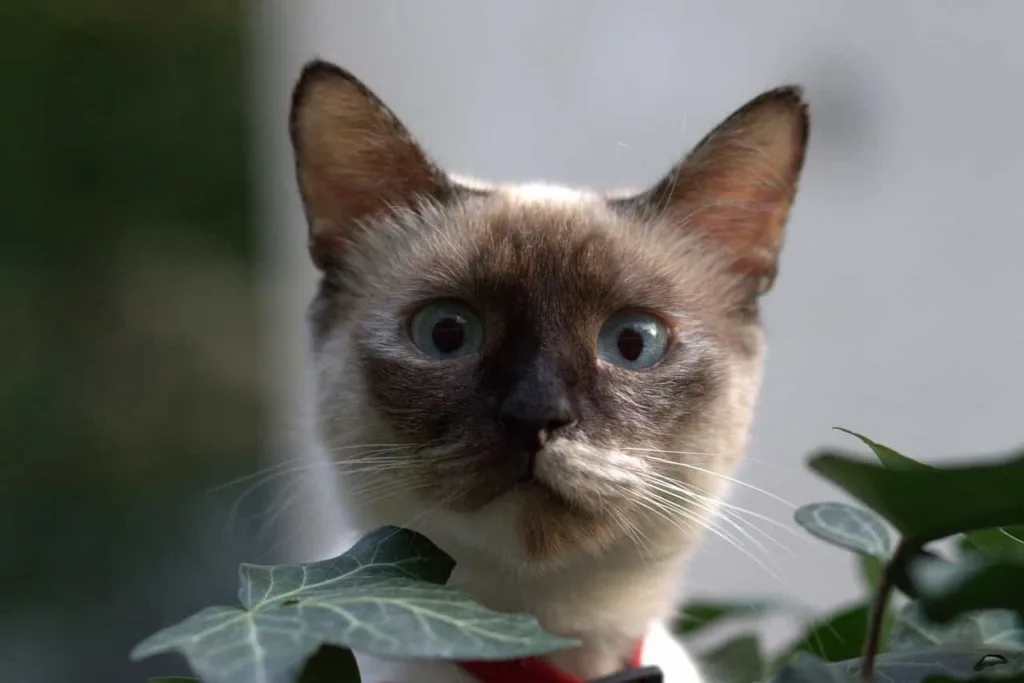

If you want to take your Burmese to keep its mental health good then it should be under supervision.
Burmese cat Grooming
The short-coated Burmese cats are low-maintenance felines. Their short and silky coats need just weekly brushing. There are dead hairs and skin oils deposited on the shin. So, you have to remove those. They need only occasional bathing and if you prefer then you can bathe your kitty once a month.
Dental hygiene is very important for all cats. So, brush your Burmese cat’s teeth after every one-day gap and check their oral health regularly. Burmese cats are prone to tearing. So, clean their eyes with a cotton ball or cotton cloth. Check their ears regularly.
If they look dirty then clean them with 50% vinegar and 50% water. Never use a cotton swab to clean their ears. It will be harmful to the interior of theri ears. All cats are very sensitive about their bathroom hygiene. So, you must clean their litter box regularly.
Burmese cat Exercise and training
As the Burmese breed is a super active and playful cat breed, so you don’t have to spend time on their training. Just provide with them toys, cat trees, food puzzles, cat teasers, etc. they exercise them very well by playing and keeping them busy themselves. They can retain their activity and playfulness till their adulthood.
The Burmese cats are super intelligent, love to learn, and are curious cats. It is very easy to teach them anything. So, train them how to obey the commands, and respond by calling their names. And potty training is a must for all cats.
Health and problems of the Burmese cat breed
All cats have health problems. The Burmese breed is inherited with some health problems. Such as
Familial Episodic Hypokalemic Polymayopathy:
Which causes skeletal muscle weakness. The whole body or the neck or limb muscles are affected by this genetic problem. A DNA test can determine whether your cat has the problem or not. When you purchase a Burmese cat from a breeder then he or she must provide the DNA test result. Otherwise don’t purchase from him.
The other diseases that Burmese cats are prone to
Kidney disease:
When a deterioration makes a progress in the kidney and builds toxins, then the kidney gets affected.
Diabetes:
A very common disease among cats and 4 times more common in Australian and British Burmese cats.
Feline orofacial Pain Syndrome (FOPS):
Acute and severe pain in the oral and facial area and even in the tongue. It happens due to an abnormal nervous system.
Endocardial Fibroelastrosis:
It is a heart problem. When the ventricular Endocardium gets thick and makes obstacles in heart function, it is called Endocardial Fibroelastrosis. It is common in some lines of Siamese and Burmese cats.
Gangliosidosis 2:
The brain, Spinal cord, and nervous system get affected by G2. it is a fatal degenerative disease. It can develop in kittens at the age of 2 months as it is an autosomal recessive disease.
Craniofacial defect:
It causes deformity of the lower jaw and nostrils, skull, protrusion of the brain, duplication of the whisker pads and canin teeth, and ocular degeneration. It was inherited from a single male cat which was used to develop a Burmese cat.
Kinked tail:
It is a tailbone deformity and only a cosmetic problem for Burmese cats. The kinked tail does not make any compact on the cat’s health.
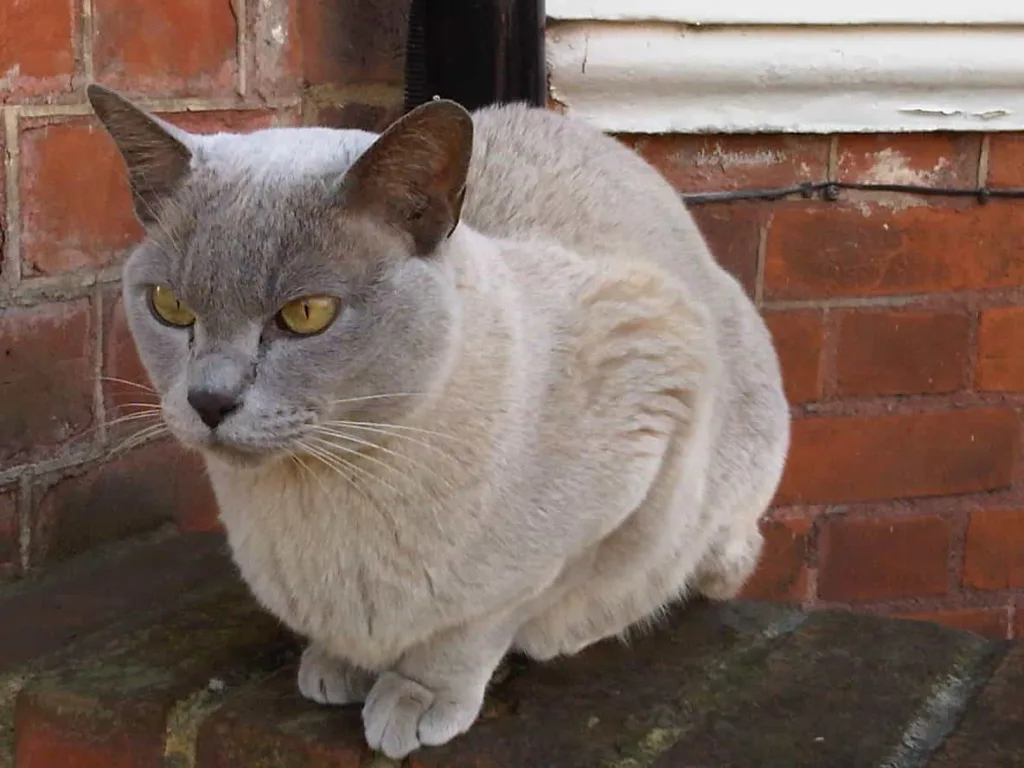


More diseases of Burmese cat
Obesity:
Other common problems are pet animals due to overfeeding and inactivity.
Dental and gum problems:
Cats are very prone to dental and gum problems,s especially Gingivitis which affects the gums.
Glaucoma:
A very serious eye problem that can lead to blindness. High pressure on the eyes is responsible for Glaucoma.
So, a regular veterinarian visit is a must for the good and sound health of your Burmese cat.
Flat-chested kitten syndrome:
The chest gets flat once they reach maturity. In the beginning, the problem remains mild but it can get severe with time.so, keep an eye on the kitten you have adopted or purchased.
Elbow Osteoarthritis:
It can cause even lameness in your kitty. When the amount of bonemarrow decreased on the joints of the elbow, it is called Elbow osteoarthritis.
Delated Caediomayopathy:
When the heart gets enlarged, it is called dilated cardiomyopathy.
the lifespan of the Burmese cat breed
The Burmese cat breed has a long lifespan. They live normally 20 years if live an indoor life and outdoor cats live up to 16 years. Some Burmese cats can hit their 30s.
The reasons behind the Burmese cat’s long lives:
Nutrition:
If the Burmese cat gets proper nutrients in their food then they can live a long life. The ideal nutrition for Burmese cats is 50% protein and 20% fat.
Environment and conditions:
The Burmese are very people-oriented cats. They need a lot of mental stimulation and company. So, if you can keep them mentally stimulated and happy then their lifespan increases.
Housing and habitations:
Keeping Burmese cats indoors is very important for their longer life. The Burmese are very brave, fearless, and careless as well. So, you need to keep them indoors to avoid accidents and infections. But most cats need a outer environment. So, take them for a walk with supervision.
Size and weight of a Burmese cat
Big size and overweight can decrease any animal’s lifespan. The Burmese cat’s average weight is about 14 pounds. So, keep the measurement between 14-16 pounds so that your cat can live long.
Sex:
The female Burmese cats live longer than the males. Another important thing is going to sexual intercourse and giving birth to kittens makes week your pet. So, if you want a long life for your Burmese then make your cat spay if it is a female and neuter if it is a male cat.
Genetical problems free:
If you adopt or purchase a healthy Burmese that is free from genetic issues, then it can accompany you for up to 20 years.
Purebred Burmese:
Purebred cats always live longer than mixbred cats. So, make sure that your Burmese is a purebred cat. So, the lifespan can increase may be up to 30s.
Health care of Burmese cat
Well, health care is expensive for all pets. The Burmese breed is prone to some genetic issues such as Familial Episodic Hypokalemic Polymayopathy and other problems. So, conducting a DNA test, vet visits, and seeking medical treatment is expensive. So, if you can afford the expense, your cat and get a healthy and long lifespan.
Make sure that your Burmese is registered for coverage at the age of 8 weeks. Take health insurance and policies for maximum age limit.
The life stages of the Burmese cat breed
Kitten (From Day-01 to 6 months):
The gorgeous and cute Burmese kittens are very adorable and playful. The time period of these 6 months is very important for the rest of their lives.
Junior (after 6 months to 2 years):
Junior Burmese are just like humans. They don’t feel shy to explore new things.
Prime (After 2 years to 6 years):
The Burmese cats retain their kitten-like activity due to their adulthood. By the age of 6, they become more curious and sexually mature. So, if you want to avoid unexpected litter then sterilize your kitty as soon as it crosses the age limit of 2 years.
Mature adult (after 6 years to 10 years):
Humans 1 year is equivalent to cats 4 years. So, these 4 years are very important. At this time period, the Bumese get mature, and all the health all the transformation from a young to adultness happen. Most of the health conditions are set at this time. So, it is a very important stage.
Senior (after 10 to 15 years):
Senior Burmese cats are equivalent to a 70-year-old human. You may have noticed that your Burmese has become slow, snoozy, and lazy at this stage. So, you have to take special care of your kitty. A regular vet check-up and taking care of their weight is a must at this stage.
Geriatric (15 years and more):
This is the sunset years of their lives. Pet insurance will be very helpful for your pet to take off of it because at this stage the pets fall sick more than at any other stage of their lives. Take care of your cat’s urinating because older cats are prone to kidney failure and they lose control of their urinating.
How to tell the age of your Burmese cat?
First of all, a professional like a veterinarian or a breeder can tell better about the age of any cat. But if you want to know yourself there are some tricks for you.
The accurate way to guess your Burmese age is by checking their coats and eyes. The older cats groom themselves less and their coats become thicker and coarser. Their eyes become cloudy and teary. If your cat’s eyes are slightly cloudy then it is near to 9 years old.
Food and nutrition tips for the Burmese cat
Burmese cats are very active, energetic, and playful cats so they need 50% protein and 20% of fat, and Omega-3 fatty acids from their diet and they are very finicky eaters too. They easily get bored with the same kind of food. You better ask your vet and the breeder about the feeding of your Burmese.
Dry food will keep their dental health good and wet food will keep their kidney in a good condition and will save them from dehydration. So, provide with them a mixture of wet and dry food. Premium quality and canned commercial food are the best for your Burmese.



If your Burmese is a poor drinker then 50% of wet food is a must. Change the brand of the commercial diet. The National Alliance of Burmese Breeders advises that switching to feline food brands is good for your cat so that it can’t be picky or choosy about feeding.
Feed them according to their age, activity, and size. Maintain a measurement cup and kibble. Don’t feed them too much. There is a high risk of getting obese in your Burmese. Water is very important for all cats. Normally, the Burmese breed drinks a lot. so, provide with them a lot of fresh and clean water daily. You can add a fountain and bubble maker to the water dish so that they get attracted to the water dish.
Some facts about the Burmese cat breed
- All Burmese cats live longer up to 20 years and some of them hit their 30s but there was a female Burmese cat, named Kataleena Lady, who lived up to 35 years. When she died, she was at the ripe age of 35 and it was a world record.
- The Burmese cats are heavy-weight champions. They are the ‘Brick wrapped in a silk’ cats. That means they are heavier than they look.
- They are the extroverts in the cat world. The Burmese are a very brave and curious cat breed. They never feel shy and so smart.
- They are very trusting cats. They get easy very quickly with strangers. So, there is a high chance to be stolen or kidnapped. You should keep them indoors.
- As the Siamese cats are the ancestors of the Burmese breed so it is very natural that the Burmese cats are very vocal and chatty cats.
- There are 2 standards for Burmese cats. One is the American Burmese and another is the British Burmese cats. The United Kindom and the USA wanted the separate breed standard for the types but the other cat registries didn’t recognize the 2 types as a separate breeds.
- The Cat Fancier’s Association recognized 4 different colors for the Burmese cat breed- Sable, Campagne, platinum, and Blue.
More facts about the Burmese cat breed
- The Burmese breed retains their kittenhood and playfulness till their adulthood.
- There are controversies surrounding the breed. When the breed gained so much popularity in the 1940s, the breeders failed to supply kittens. They outcrossed the Burmese with the Siamese cats to fulfill the demand of Burmese lovers.
But the Cat Fancier’s Association (CFA) banned the outcrossing to reserve the gene and pure bloodline of the Burmese cat in 1947. CFA stated that the Burmese breed had to the standard of 3 generations of pure breeding. The standard was achieved in 1956 CFA returned the breed standard to the Burmese cat.
- The Burmese breed created other cat breeds like Bombay cats and Burmilla cats.
- The Burmese are prone to some genetic diseases like Familial Episodic Hypokalemic Polymayopathy, Endocardial Fibroelastrosis, Feline orofacial Pain Syndrome (FOPS), Elbow Osteoarthritis, and so on.
- The Burmese is one of the original cat breeds recognized by The International Cat Association (TICA).
Some reasons why you shouldn’t get a Burmese cat
Burmese cats are great but as you know that all goods are not for all so the living and adorable Burmese cats are not for you if the reasons you have that I have described below-
- The Burmese are high jumpers. They can jump touching your sealing. So, if you don’t like such a high jumper cat to save your compliances and foods that you have stored on the shelves, then Burmese cats are not for you and your family.
- The Burmese cats have a lot of energy. They are always up for playing, running, and doing activities and hate to be lazy especially when they are young. So, if you want a calm cat the Burmese may not be the best for you.
- They need love and attention. They love to be around their family, observe, investigate, and want to be with their owners. So, if don’t want to give them love and attention, and company as well then the Burmese breed may not be the best for you.
- They are loud, vocal, and chatty cats. They never feel shy about what they need and what are they thinking. They also love to tell you about their day. They will remind you that its the time for dinner. So, if you don’t like such a vocal and loud cat then don’t have a Burmese cat.
- The Burmese cats need high-quality foods full of protein and fat. So, if you don’t want to give your pet high-quality food then you shouldn’t get a Burmese cat. You better look for another cat.
Breed overview of the Burmese cat
Well, the Burmese is a very active, playful, intelligent, brave, smart, loving, chatty, vocal, adorable, and affectionate cat breed. Their ancestor was Wong Mau- a female Siamese cat and Tai Mau- a seal point Siamese. Wong Mau was from Burma, presently Myanmar, and arrived in London, in 1930 met Tai Mau and gave birth to kittens. thus the breed was raised and named after its homeland Burma or Myanmar.
However, the Burmese breed’s body size is medium, its body length is 18 inches, body weight is Up to 14 pounds. Their Coat length is Short, the original coat color is Sable or Rich, and dark brown or Seal. besides, other colors are also available such as Champagne, Blue, Platinum, Red, Cream, Chocolate, Apricot, Fawn, and Lilac, as variations of each color and coat pattern: Solid and Tortoiseshell. The eye colors are Gold, Amber, and Green. The Burmese breed got recognition from the CAT Fancier’s Association (CFA) in 1956.
Tips for the Burmese cat breed
If you want to get a Burmese cat from a breeder then there are some organizations that publish a list of trusted and reputed breeders. So, check out the websites of The National Alliance for Burmese Breeders and the Cat Fancier’s Association (CFA).
Don’t take a kitten from the breeders that have not passed at least 16 weeks with its mother. That 16 weeks are very important for socializing a kitten.
Burmese kitten ideal weight chart
When you will purchase a Burmese kitten, then check its weight according to the chart I have given below. This is an ideal weight chart:
| Age | Ideal weight according to kilograms | Pounds |
| 0-1 week | 80-150 grams | 2.8- 5.2 ounces |
| 1 week-2 weeks | 150 grams-250 grams | 5.2-8.8 ounces |
| 2 weeks- 3 weeks | 250 grams-350 grams | 8.8- 12.3 ounces |
| 3 weeks- 4 weeks | 350 grams-450 grams | 12.3-15.8 ounces |
| 4 weeks- 5 weeks | 450-550 grams | 15.8 ounces- 1.2 pounds |
| 5 weeks- 8 weeks | 550-850 grams | 1.2- 1.8 pounds |
| 8 weeks- 10 weeks | 850 grams- 1.4 kilograms (Kg) | 1.8-3.0 pounds |
| 10 weeks-12 weeks | 1.4- 1.8 Kg | 3.0- 3.9 pounds |
| 12 weeks- 16 weeks | 1.8 -2.4 kg | 3.9- 5.2 pounds |
Adopting from a shelter or rescue
Well though it is very difficult to find an adult Burmese cat to a shelter or rescue because the lovable and coveted Burmese cats are not usually abandoned by its owner. But if any drastic change arrived in the owner’s life then he will be bound to his or her Burmese to a shelter or rescue.
So, you can search there. Who knows when a Burmese cat needs a new home and owner? You can search pet finder.com, adopt-a-pet.com, Burmese Rescue Program, and Rescue Me.
Burmese cats rehoming for UK
In the United Kingdom, there are some Bumese cats clubs and organizations that help Burmese cats with their rehoming. If you want to adopt a Burmese or any Burmese needs rehoming then you can contact- gokitty.com, burmesecatclub.com, www.loverburmese.co.uk/cat/availabilty, www.woodlandsanimalsanctuary.org.uk/rehoming/cats.
Burmese cats near me:
If you want to find a breeder for Burmese cats and kittens near you then there is a trusted and reputable breeder- pets4you.com.
Burmese cats for sale-
visit the website to sell and purchase Burmese cats- localkittensforsale.com.
Burmese Cat Socialization
Socialization is pivotal in the life of a Burmese cat, influencing both its personality traits and overall well-being. From an early age, Burmese kitten training should involve exposure to various environments and experiences, fostering their natural sociability. This breed, known for its longer-than-average lifespan, thrives on interaction and emotional connection. Socializing your Burmese cat involves regular playtime, introducing them to new people, and, if possible, other pets.
This process helps mitigate potential health issues by reducing stress and anxiety. The playful nature of the Burmese cat, combined with their affectionate demeanor, makes them adaptable to indoor settings, where their social needs can be fully met. Effective socialization ensures that your Burmese cat grows into a well-adjusted and happy pet, embodying the best of their breed characteristics.
Burmese Cat Adoption Guide
Adopting a Burmese cat is a fulfilling journey that begins with understanding their unique needs and personality traits. When considering Burmese cat adoption, it’s important to connect with reputable breeders or animal shelters that prioritize the health and well-being of these cats. The lifespan of a Burmese cat can span many years, making it essential to prepare for a long-term commitment.
Prospective adopters should be informed about the breed’s characteristics, including their need for companionship and potential health issues. When adopting, look for signs of good health and a well-socialized demeanor, indicative of the breed’s playful and affectionate nature. Adoption is more than just bringing a pet home; it’s about creating a nurturing environment that caters to the Burmese cat’s specific needs, from nutrition to grooming, ensuring they live a full and happy life.
Burmese Cat Feeding Guide
Feeding a Burmese cat requires careful consideration to ensure they receive the right balance of nutrition throughout their lifespan. The best food for Burmese cats combines high-quality ingredients that cater to their specific dietary needs. Burmese cats, known for their unique personality traits, also have specific dietary preferences and requirements.
It’s important to choose a diet that supports their health and vitality, addressing common health issues like obesity or dental problems. Regular consultations with a veterinarian can help tailor a feeding plan that aligns with the cat’s age, weight, and health condition. Incorporating both dry and wet food, alongside occasional treats, can provide a varied and enjoyable diet for your Burmese cat, keeping them healthy and content.
Burmese Cat Maintenance and Safety Guide
Maintaining and ensuring the safety of a Burmese cat involves a multifaceted approach, focusing on their physical health and environmental well-being. Regular grooming is essential, not just for their aesthetic appeal but also for their health. Burmese cat grooming tips include routine brushing to maintain their shiny coat and prevent matting, along with nail trimming and dental care to prevent common health issues.
Safety for indoor cats like the Burmese extends to creating a hazard-free home environment and providing enriching activities that cater to their playful nature. It’s crucial to be vigilant about potential dangers like toxic plants or small objects that could be ingested. By understanding the specific needs and characteristics of the Burmese breed, owners can create a nurturing environment that promotes their health and happiness for years to come.
Conclusion
In summary, the Burmese cat is a remarkable breed, distinguished by its charming personality, longevity, and affectionate nature. From the initial steps of adoption to the daily joys of feeding and caring for these delightful creatures, each aspect of Burmese cat care is rewarding. By embracing the responsibilities and joys of Burmese cat ownership, you ensure a fulfilling and loving relationship with your feline companion. Whether it’s through understanding their unique grooming needs or ensuring their social well-being, every moment spent with a Burmese cat is a testament to the special bond between humans and their beloved pets.

